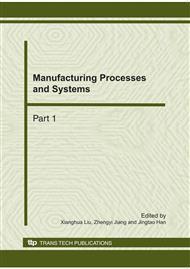p.267
p.271
p.276
p.280
p.285
p.289
p.293
p.299
p.304
Multi-Component Gas-Liquid Equilibrium for Hydrogen Production from Glucose Gasification in Supercritical Water
Abstract:
A high-pressure absorption method can realize separation of H2 from CO2 since they have different solubility in high-pressure water. The gas-liquid equilibrium model of hydrogen production from glucose gasification in supercritical water based on the modified SAFT model and SAFT equation of state was developed to predict the effect of absorber’s pressure on the molar fraction of product gases in gas phase, absorption rate in liquid phase and gas yield. It was found that molar fraction of H2, CH4 and CO increased with the increasing pressure, while molar fraction of CO2 decreased. It indicates that higher pressure facilitate purity of H2. But H2 yield reduces from 0.00736mol to 0.00332mol while pressure increases from 0 MPa to 20MPa. It demonstrates that higher pressure can reduce gas yield. As a result, the purity and gas yield of H2 should be considered simultaneously for selecting proper pressure. Additionally, it is difficult to separate H2 from CH4 and CO using the high-pressure absorption method. This work is very useful for process design, development and optimization of biomass gasification in supercritical water.
Info:
Periodical:
Pages:
285-288
Citation:
Online since:
October 2010
Authors:
Keywords:
Price:
Сopyright:
© 2011 Trans Tech Publications Ltd. All Rights Reserved
Share:
Citation:


